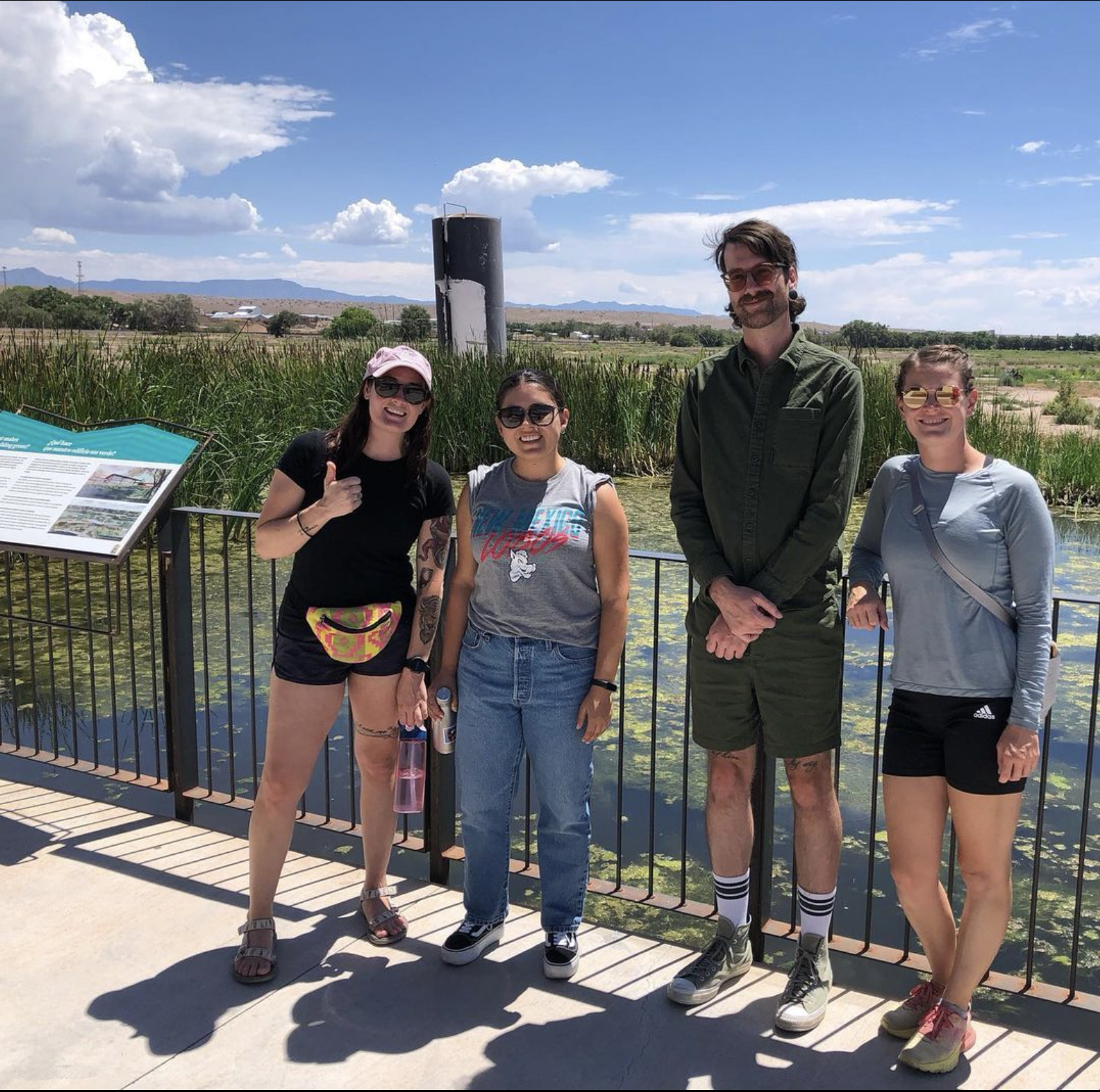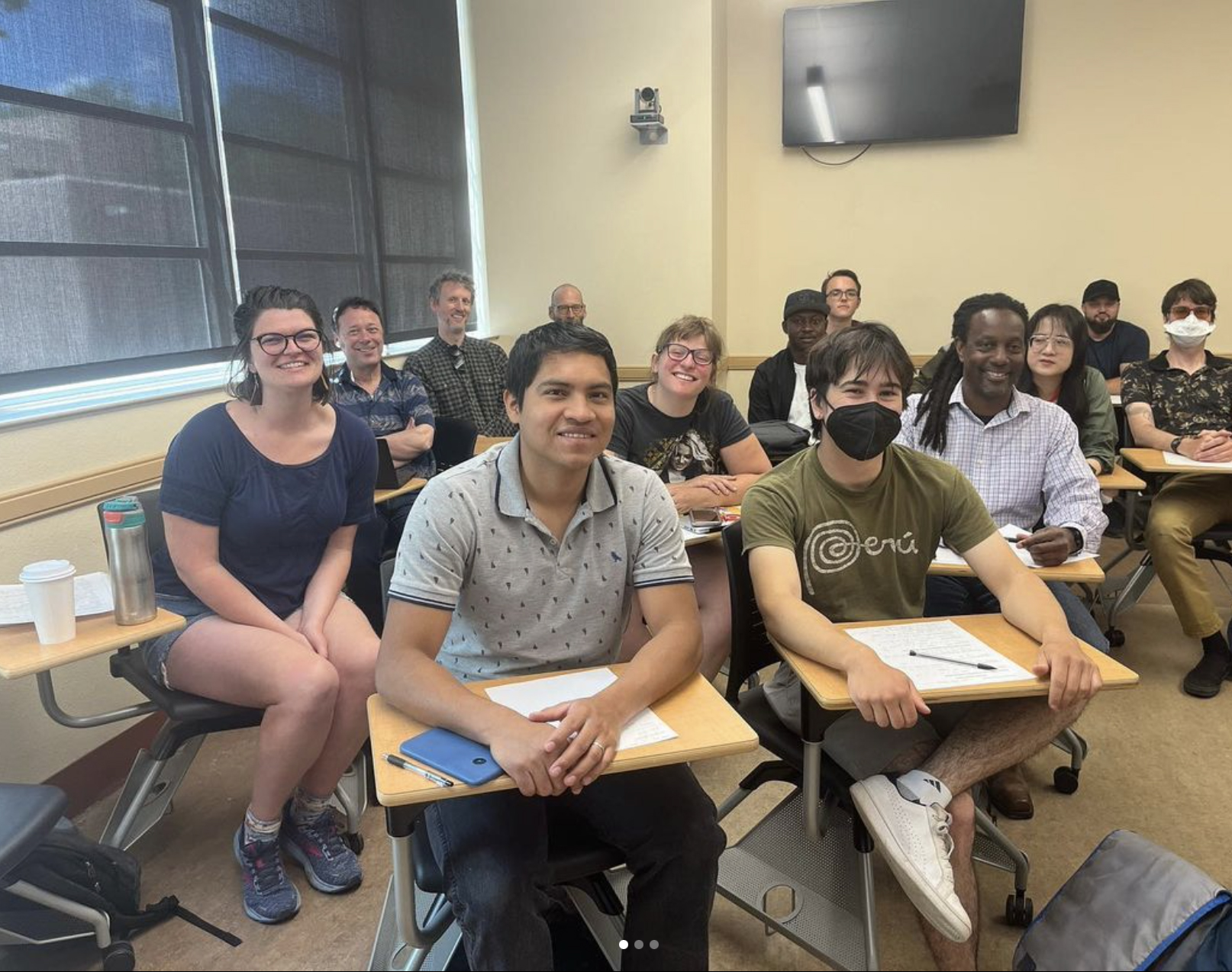Connecting people and spaces
November 8, 2023 - Geneva Sandoval
In 2020, the R.H. Mallory Center for Community Geography was launched by the Department of Geography & Environmental Studies (GES) thanks to a generous gift from alumnus, R.H. Mallory. The program engages with community groups, partnering in projects ranging from community mapping to environmental awareness.

Mallory, an Albuquerque native, had his passion ignited when he enrolled in the Geography 101 course as a student. At the time, the course filled a gap in his schedule. What he found, however, is that geography is a powerful tool for connecting people and spaces. This is why he proudly calls himself an “accidental geographer.”
Mallory established an acoustics firm in Albuquerque, but his connection to GES remained strong. He credits the department with his degree completion and an expansion of his worldview, and because of the impact the department made on him, he gives back by also serving on their advisory board.
Since its establishment in fall 2020, the Center has developed three key engagement areas: service-learning in GES courses, community-engaged research and fellowships, and public events that bring university and community groups together to focus on human-environment topics.
In a few short years, the Center has added seven UNM faculty affiliates, distributed thousands of dollars in funding to UNM students and faculty, supported the addition of two new interactive geography courses, and completed community-engaged projects across Bernalillo County. Overall, the Center has been successful in creating a connective collaboration network that benefits students, faculty and a wide variety of community partners.
Through this network, students have worked with the Albuquerque City Nature Challenge (ABQ CNC) to develop data-driven infographics that have been shared through social media to spur participation in a community science effort. Student work helped contribute to Albuquerque placing 22nd in this year’s challenge out of 482 cities worldwide, raking in 16,012 observations across Sandoval, Bernalillo, and Valencia counties.

The students developed CNC infographics as part of their work in the new GES course Information Design for Science and Society (GEOG 2115), which was recently added to the university's general education curriculum. Thanks to funding from the Center for Community Geography, students had the opportunity to immerse themselves in project-based learning while also supporting a community project.
Yolanda Lin, assistant professor and instructor of the course says, “GEOG 2115 offers students the unique opportunity to build valuable skills at the intersection between data, design, and people. Students have shared that the community-engaged ABQ City Nature Challenge class project has helped them feel more personally connected to Albuquerque's human and more-than-human environment.”
Another GES course that relies on Center funding to provide community engagement experience is Critical Cartography (GEOG 426/526). The course is rooted in critical theory and explores the argument that maps can be interpreted as expressions of power and knowledge. In spring 2023, students applied this theory through two different community-engaged projects.
One group worked with high school students at Rio Grande HS to do a participatory mapping project on “Best Places in the South Valley.” Another group worked on a re-examination of the Old Spanish Trail.
The Center has also announced funding support for a new field course called Environmental Justice in Greater Chaco (GEOG 499), which will be offered in the Spring 2024 semester.

The course will center its attention on the intricate experiences surrounding resource extraction, impacts of climate change, and struggles for environmental equity within the Greater Chaco Landscape. The course will begin with instructor-led readings and discussions on the UNM campus, but students will then spend most of their time in the field, learning directly from community leaders about the economic and political geographies of environmental justice.
“We are proud to provide UNM students with opportunities to learn from community partners and participate in community projects,” said Center director Maria Lane. “Community engagement will remain a cornerstone of our mission, since it benefits UNM as well as our surrounding community.”
